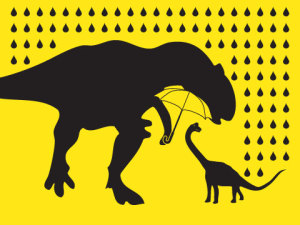It’s starts right on the very first page: “if it doesn’t spread, it’s dead” (1). Positioning Spreadable Media as a look at media from both the bottom-up and top-down, Jenkins, Ford, and Green, quickly get to the point. Digital culture is composed of people who are “shaping, sharing, reframing, and remixing media in ways which might not have been previously imagined” (2). They are transforming the works they interact with in ways both profound and mundane. To exist in this new ecology, though, to move between the actors and boost along the network, media needs to be spreadable.
What does it mean for media to be ‘spreadable’?
Spreadability is “the potential — both technical and cultural — for an audience to share content for their own purposes, sometimes with the permission of the rights holders, sometimes against their wishes” (3). In one case, it might mean uploading a television episode to YouTube, or could mean fans subbing anime not available in certain markets. It each instance, though, the media survives longer and proliferates more because it has this same quality: it is spreadable.
However, this spreadability is limited by a number of factors. The first of which is the technical resources needed to circulate the media. The more restrictions placed on the media in terms of digital rights management or just simple legalities, the harder it is to spread around to other actors. If it is locked away, or even takes more experts to handle, the less likely it will spread. The more control over it, by means of market, law, access, or anything else, really, the greater the investment needed to move it and the decreasing case it will be spread.
The second (and arguably the most important) factor is the economic structures around, containing, and within the media itself. How much does it cost in work to move the media? How many people are needed to create it? Maintain it? How about transfer its content between mediums? How much, in other words, does maintaining and spreading the media cost? If it is too great, it might not last.
The same can be written for the last two factors: the attributes of the content itself, and social networks through which it is shared and given value. Like other resources, if the media has great worth to the members of the network it will spread throughout their interactions. If, however, the attributes of the content prevent it from spreading somehow, if is has some inherit fragility, for example, its spread will be slow and careful, with each new link measured for security and stability. It will still spread if it has great worth, of course, but much slower and with greater deliberation.
Stickiness is not spreadability.
Jenkins, Ford, and Green mark a clear difference between stickiness and spreadability. Stickiness, they write, “capitalizes on the easiest way companies have found to conduct business online — rather than the ways audiences want to and do experience material online” (4). These companies creates sites and drive people to them. However, they also do more, borderline nefarious, things as well. They create, in the words of Jenkins, Ford and Green, “virtual ‘roach motel[s]” where media gets collected and ultimately “dies” instead of moving along to new places (6). Instead of spreading media around, they explain, the stickiness is trapping users and preventing them from using media or changing it to suit their needs.
The term stickiness originally comes from Malcolm Gladwell, they write, but has been put into use in all matter of marketing campaigns. What started as a way to get people to come visit a site and spend some time has morphed into targeted strategies to keep users trapped there indefinitely. In some cases, this has even meant opening new windows or finding ways to disable the ‘Back’ button in a user’s navigation history. Anything, in some extreme cases, for keeping a user around as long as possible and with zero hope of them finding things to them share outward along social networks.
Sharing is caring?
The decisions around whether to share something are grounded in its context: “Is the content worth engaging with? Is it worth sharing with others? Might it be of interest to specific people?” (13). To see media shared between people is to assume a relationship of some kind; however, people often don’t think of the content itself (or what might be behind it), but of the messages imparted with the content. Users want “to feel like they’re a part” of the discourse around some content, to be in on the joke or meme shared (14). It is this sharing, and the media embedded within the networks of worth, that guide the spreading.
The users here are not infection vectors only, though, as Jenkins, Ford, and Green point out. Users are not getting content to go “viral,” nor are they trying to infect their friends with some material. No, “audiences play an active role in ‘spreading’ content rather than serving as passive carriers of viral media; their choices, investments, agendas, and actions determine what gets valued” (21). “Spreadability,” they write, “assumes a world where mass content is continually repositioned as it enters different niche communities” (27). Users are bringing content back to others because they see worth in it, not because it has changed them into zombies capable of only infecting others; it is much more about the users, their intentions, and their actions than the content itself, really.
Comments:
Sarah Camp’s “Week 10 – Technologies of Wonder (work in progress)” (Comment)
[Posted at 11:24 PM, Friday, December 12, 2014]
Always love a shout out to Judith Bulter and some talk of gender performances. Plus, I like the re-emphasis of bodies that Feminist Geography brings back to the table. Seems pretty neat, that.
Shantal’s “Does Writing Have a Future? Reading Notes Pt 1.” (Comment)
[Posted at 11:44 PM, Friday, December 12, 2014]
I still don’t like Flusser. His “computers are ruining everything” approach is just such a major turn off given my background and skill-set. Programmars aren’t making the world worse. Well, mostly, anyway.


